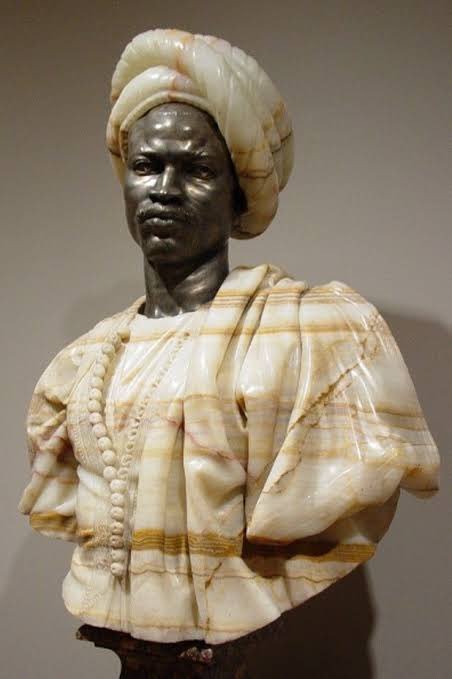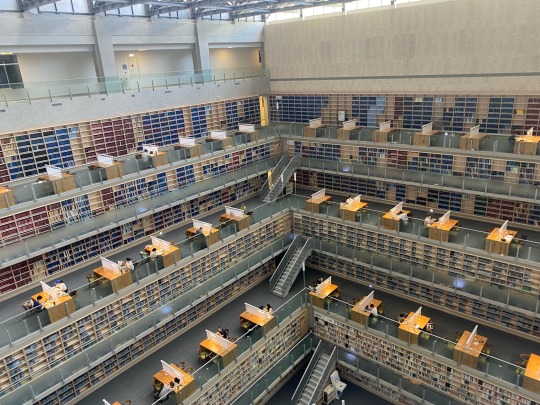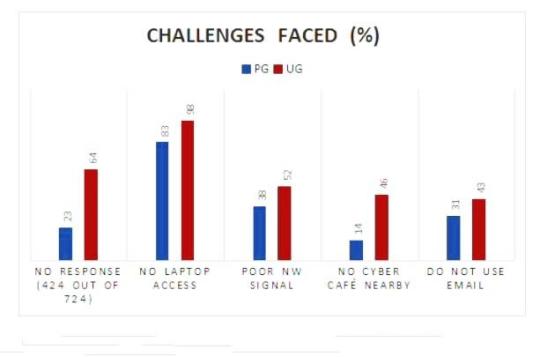#but this class is 90% mbas
Explore tagged Tumblr posts
Text
i couldnt figure out why the elective im taking this quarter has such bad vibes and is weird and the people in the class are weird
and then i realized........ it's bc this is an MBA class LMAO
#every other class ive taken has been accounting masters only#or i did one that was a mix of grads and undergrads#but this class is 90% mbas
2 notes
·
View notes
Text
THE MOORS By: Dr. Leroy Vaughn, MD, MBA. A Dynamic, Honest and Powerful View of Black History.




During the European Dark Ages, between the 7th and 14th century AD, the Moorish Empire in Spain became one of the world's finest civilizations. General Tarik and his Black Moorish army from Morocco, conquered Spain after a week-long battle with King Roderick in 711 AD. (The word tariff and the Rock of Gibraltar were named after him). They found that Europe, with the assistance of the Catholic Church, had returned almost to complete barbarism. The population was 90% illiterate and had lost all of the civilizing principles that were passed on by the ancient Greeks and Romans. The Moors reintroduced mathematics, medicine, agriculture, and the physical sciences. Arabic figures including the zero and the decimal point replaced the clumsy Roman numerals. As Dr. Van Sertima says, "You can't do higher mathematics with Roman numerals." The Moors introduced agriculture to Europe including cotton, rice, sugar cane, dates, ginger, lemons, and strawberries. They also taught them how to store grain for up to 100 years and built underground grain silos. They established a world-famous silk industry in Spain. The Moorish achievement in hydraulic engineering was outstanding. They constructed an aqueduct, that conveyed water from the mountains to the city through lead pipes from the mountains to the city. They taught them how to mine for minerals on a large scale, including copper, gold, silver, tin, lead, and aluminium. Spain soon became the world centre for high-quality sword blades and shields. Spain was eventually manufacturing up to 12,000 blades and shields per year. Spanish craft and woollen became world famous. The Moorish craftsman also produced world-class glass, pottery, vases, mosaics, and jewellery. The Moors introduced to Europe paved, lighted streets with raised sidewalks for pedestrians, flanked by uninterrupted rows of buildings. Paved and lighted streets did not appear in London or Paris for centuries. They constructed thousands of public markets and mills in each city. Cordova alone had 5,000 of each. They were also introduced to Spain's underwear and bathing with soap. Their public baths numbered in the thousands when bathing in the rest of Europe was frowned upon as a diabolical custom to be avoided by all good Christians. Poor hygiene contributed to the plagues in the rest of Europe. Moorish monarchs dwelled in sumptuous palaces while the crowned heads of England, France, and Germany lived in barns, lacking windows, toilets, and chimneys, with only a hole in the roof as the exit for smoke. Human waste material was thrown in the streets since no bathrooms were present. Education was made mandatory by the Moors, while 90% of Europe was illiterate, including the kings and queens. The Moors introduced public libraries to Europe with 600,000 books in Cordova alone. They established 17 outstanding universities in Spain. Since Africa is a matriarchal society, women were also encouraged to devote themselves to serious study, and it was only in Spain that one could find female doctors, lawyers, and scientists. Moorish schoolteachers knew that the world was round and taught geography from a globe. They produced expert maps with all sea and land routes accurately located with respect to latitude and longitude; while also introducing compasses to Europe. They were such expert shipbuilders that they were able to use their geography expertise to import and export as far away as India and China. It was not by accident that a Moor named Pietro Olonzo Nino was the chief navigator for Christopher Columbus on the flagship Santa Maria. He is said to have argued with Columbus as to who really discovered America. One of the worst mistakes the Moors made was to introduce gunpowder technology from China into Europe because their enemies adopted this weapon and used it to drive them out of Spain. #Africa
28 notes
·
View notes
Text
Top 10 richest black people in the world

In a world where success is often measured by wealth, the richest Black people stand out as remarkable figures.
These individuals are pioneers in diverse fields, from business to entertainment, and their achievements not only shatter barriers but also pave the way for others to follow.
Take a look at the top 10 richest Black people in the world:
David Steward $11.4 billion USA
David Lloyd Steward, born in 1951, is an American billionaire entrepreneur. He is the founder and chairman of World Wide Technology (WWT), which is among the largest African-American-owned companies in the United States. In 2024, Steward was ranked 344th on Forbes’ list of billionaires globally, with an estimated net worth of $11.4 billion.
Aliko Dangote ($11.3 billion)
Aliko Dangote, born on April 10, 1957, is one of the richest Black people in the world. A prominent Nigerian businessman and industrialist, he is notably the first person to build a private oil refinery in Nigeria. As of October 2024, Forbes ranks him as the 211th richest person in the world, with an estimated net worth of $11.2 billion. According to the Bloomberg Billionaires Index, his wealth is estimated at $27.7 billion.
Robert F. Smith ($10.8 billion)
Robert Frederick Smith, born on December 1, 1962, is an American billionaire businessman and philanthropist. He is the founder, chairman, and CEO of Vista Equity Partners, a private equity firm. Smith earned a chemical engineering degree from Cornell University and later an MBA from Columbia Business School. Before founding his company, he worked as an investment banker at Goldman Sachs. In 2019, during a commencement speech at Morehouse College, Smith made headlines when he pledged to cover the entire $34 million in student loan debt for the graduating class of 2019.
Mike Adenuga ($6.6 billion)
Mike Adenuga, Nigeria’s second wealthiest person, amassed his fortune through telecommunications and oil ventures. His mobile network company, Globacom, is the second-largest in Nigeria, boasting over 60 million subscribers. In addition to telecommunications, Adenuga’s oil company, Conoil Producing, operates six oil blocks in the Niger Delta.
Globacom also established Glo-1, a 6,100-mile submarine internet cable linking the U.K. with Ghana and Portugal. Adenuga holds a 74% stake in publicly traded Conoil and owns just under 6% of Nigerian bank Sterling Financial Holding.
Abdulsamad Rabiu ($ 4.7 billion)
One of the richest Black people in the world, Abdul Samad Isyaku Rabiu is a prominent Nigerian businessman and philanthropist. As of 2024, he ranks as Nigeria’s third richest man. His father, Khalifah Isyaku Rabiu, was one of Nigeria’s leading industrialists in the 1970s and 1980s. Abdul Samad is the founder and chairman of BUA Group, a Nigerian conglomerate focused on manufacturing, infrastructure, and agriculture, generating over $2.5 billion in revenue. He also serves as the chairman of Nigeria’s Bank of Industry (BOI).
In July 2020, Forbes valued his net worth at $3.2 billion, placing him 716th among the world’s billionaires. By January 2022, he was recognised as Nigeria’s second richest person. In April 2022, he ranked as the fifth-richest person in Africa with a fortune of $6.7 billion, and by January 2023, he climbed to fourth on the continent’s wealthiest list.
Michael Jordan ($3.5 billion)
Widely considered the greatest basketball player of all time, Michael Jordan won six championships with the Chicago Bulls. Throughout his career, his total salary amounted to $90 million, but his earnings from partnerships with brands like Nike, Hanes, and Gatorade have reached an astounding $2.4 billion (before taxes). In 2020, Jordan became a special advisor and investor for the sports-betting company DraftKings and also co-owned a NASCAR team. In 2023, he sold his majority stake in the Charlotte Hornets in a deal that valued the NBA team at $3 billion.
Oprah Winfrey ($3 billion)
Oprah Winfrey turned her 25-year-long talk show into a powerful media and business empire. The profits from her show, combined with earnings from films like ‘The Color Purple’, ‘Beloved’, and ‘Selma’—which were co-produced by her company, Harpo Productions—have brought her wealth to an estimated $2.5 billion.
In 2011, she launched the OWN cable channel and later sold most of her shares in it to Warner Bros. Discovery in 2020, receiving company stock in return.
In 2015, Winfrey purchased a 10% stake in WeightWatchers, and in 2024, she generously donated her shares to the Smithsonian’s National Museum of African American History and Culture.
Winfrey also owns an extensive real estate portfolio, including homes in California and more than a dozen properties, along with 2,100 acres of land in Hawaii.
Patrice Motsepe ($3 billion)
Patrice Motsepe, founder and chairman of African Rainbow Minerals, became a billionaire in 2008, making history as the first Black African to appear on the Forbes billionaire list. In 2016, he established African Rainbow Capital, a private equity firm focused on investments across Africa. Motsepe also holds a stake in Sanlam, a publicly traded financial services company, and is the owner and president of the Mamelodi Sundowns Football Club.
In March 2021, he was elected president of the Confederation of African Football (CAF), the governing body for soccer on the continent. His business journey began in 1994 when he became the first Black partner at Johannesburg law firm Bowman Gilfillan, later launching a mining services company. In 1997, Motsepe acquired underperforming gold mine shafts, which he successfully turned around
Jay-Z ($2.5 billion)
Since becoming hip-hop’s first billionaire in 2019, Jay-Z has significantly increased his wealth, largely due to his successful liquor ventures. In 2021, luxury conglomerate LVMH acquired a 50% stake in his champagne brand, Armand de Brignac, also known as Ace of Spades. In February 2023, he sold a majority of his ownership in his cognac brand, D’Usse, to Bacardi.
Beyond liquor, Jay-Z’s wealth includes assets like an art collection featuring works by Jean-Michel Basquiat, his extensive music catalog, and stakes in companies such as Block and Uber. In 2021, he was inducted into the Rock & Roll Hall of Fame, and in 2022, he won an Emmy for producing the Super Bowl Halftime Show.
Strive Masiyiwa ($1.8 billion)
Strive Masiyiwa faced huge government resistance when he launched the mobile phone network Econet Wireless Zimbabwe in his home country in 1998. He holds a 38% stake in the publicly traded Econet Wireless Zimbabwe, which is part of his larger Econet Group, as well as about 33% of EcoCash, a mobile money transfer company.
Masiyiwa also has an investment in Liquid Intelligent Technologies, a private firm that offers fiber optic and cloud services to telecom companies throughout Africa. His portfolio includes investments in fintech and power distribution companies across the continent, along with stock options in Netflix, where he has been a board member since December 2020. He and his wife, Tsitsi, founded the Higherlife Foundation, which assists orphaned and underprivileged children in Zimbabwe, South Africa, Burundi, and Lesotho.
3 notes
·
View notes
Text
July 22nd, 2024 星期一 - NCCU tour, Taipei Zoo, Teahouse in the Mountains
This morning I was so extremely tired so I woke up around 8:45 am and got ready to go to a nearby bakery for breakfast. I sped over there and ended up buying a ham and Swiss croissant and a walnut cinnamon bun thingy. They were pretty tasty and fairly cheap. I then met up with my class and we headed out on a (non-party) bus to visit NCCU, our professor’s alma matter hehe. It was definitely a long drive there but I just ate my pastries on the way. I carried my new water bottle with me all day but quite literally never filled it up 😭
Our first stop at the university was the international dorm, where we were greeted by some of the buildings staff. I lived in the international dorm back when I was a freshman so it was interesting to see what theirs looked like. It was a seven floor building that included both single and double rooms. The size of the single room we toured was at least twice that of the ones at UF. The rooms also had a balcony, its own bedding, and a fairly large mini fridge.
Next we toured the common area which was pretty large BUT lacked a real stove or oven. It was also pretty interesting that there were little cards everywhere with the Chinese name and pinyin of random items such as the fridge and fire extinguisher. The NCCU representative told us that the building is 90% international students and 10% Taiwanese students, which is definitely more than the 60% American students to 40% international students at UF. But I guess having less Taiwanese students gives more space for international students to have housing. The representative also mentioned that a lot of the visiting students are finance majors.
After this, we headed to view the different study spaces around the building before hopping in the bus off to our next tour stop. We ended up at the Dah Hsien Seetoo library, which was donated in 2018 by the former MBA students of NCCU professor Dah Hsien Seetoo. The library was very nice and modern inside, although the temperature was abnormally warm. We toured around the different floors and viewed spaces such as the study rooms and the maker space. Something I found interesting about the study rooms (for undergrads) is that instead of having individual spaces in a room, it was different cubicles you could reserve. For example, one room would have spots ABCDEF, and you would reserve seat D to study. For graduate students, however, there were also designated study spaces that they had the key to for whatever period of time. There is also something like that at UF in Library West, though less modern of course. In the maker space, there were multiple types of 3D printers, an engraver, and a heat press. All machines are free to use and long as you bring your own graphic or AI file to send to the machines.
At the end we visited a famous cafe in the bottom floor of the library. Some students got coffee and deserts but I was more interested in watching the ducks that lived in a little house outside by the nearby pond. There weren’t out when we first got there but later they came out and swam around. I went to the shore of the pond a few times to look at them better and they came onto the bank to play in the bushes. After the coffee shop, we headed out to NCCU’s version of University Blvd, a street with a lot of restaurants and boba shops. Some classmates and I decided on a dumpling shop down the street. I got pork and veggie potstickers, Korean style potstickers, and a pork and veggie wonton noddle soup. After lunch, we walked around for a bit and our professor bought us ice cream (<3) since it was so hot. I also ended up buying a passion fruit tea with coconut jelly.
We then headed to the zoo. It was a very very large zoo, it had a tram to take from one side to the other. We first viewed the kolas and pandas as a group. The kolas were so cute and fully. They looked very sleepy which I resonate with HEAVY. At first we couldn’t see much of the pandas, but after the zookeepers brought out their lunch, they were visible. They were so cute and large and fluffy. They almost looked fake haha. I visited the upstairs gift shop of the panda exhibit and bought a fairly good quality canvas tote bag with a drawn map of Taipei on it. Next, we took the tram to the reptile exhibit. There were more turtles and tortoises in this zoo than I think I’ve ever seen in my life. We explored several other exhibits afterwards— including the penguins, giraffes, elephants, sun bears, zebras, mandarin ducks, and Pygmy hippos. Something interesting about this zoo was the insane amount of food options. I feel like zoos in the U.S. barely have food places, and if they do, it’s super overpriced. At the end, we met with the rest of the class at the main gift shop. I folded last minute a bought a cute turtle keychain and a capybara with a turtle backpack (I might like turtles idk).
Next we took some group pictures outside before heading in the bus up a mountain to go to a famous teahouse. We got to experience the tea ceremony with jasmine tea (hehe) and I ordered some soy sauce braised chicken wings and a bowl of rice as a snack. After eating, I walked around outside and watched my classmates search for a large stick to beat up a spider so they could go down a path to cross a bridge to get closer to the nearby waterfall. There were some crazy mosquitos out there but thankfully our professor lent us mosquito spray when we had first got off the bus. I pet a very talkative orange cat while I was walking around outside (the cats in Taiwan so far tend got be so talkative). Eventually we did the drive home, where I showered, and then met with some of my classmates to get Indian food.
Academic Reflection
Taiwan Zoo was originally just the privately owned zoo of a Japanese man in the northern part of Taipei City. After just a year, the then Japanese government of Taiwan bought the land and turned it into a public park called the Maruyama Zoo (Maruyama is now called Yuanshan). After World War 2, the park was taken over by the ROC Taipei City government. One of the most popular animals was Lin Wang, an Asian elephant that worked during the second Sino-Japanese and relocated with the Kuomintang. He was the most popular animal until the zoo received 2 pandas from Mainland China.
In 1973 they made plans to build a modern zoo and after thirteen years, the original zoo in Yuanshan was closed and a new zoo in the southern part of Taipei was opened on New Year’s Day. The location was moved to accommodate more animals and give more space for the both the recreation and research sides to function. The new Taiwan Zoo is now one of the largest zoos in Asia, and focuses on the conservation and research of animals and insects. Something unique about this zoo is the Formosa animal area, where zoo visitors can see native Taiwanese animals such as Eurasian otters, Pangolins, and sika deer.










3 notes
·
View notes
Text














“When I was still a professor, [this is] the way I tried to explain [investment] to students, especially MBA students who are cut-throats and try to undermine each other like there's no tomorrow.
I used to love doing that, it was great fun for me... not for them.
I used to say to them: You know what, I hate marking scripts so I'm going to give you your grade now. Day one, first lecture.
I'm going to give you the semester grade now and then we can meet for the purpose of your education and mine.
Just take a piece of paper out. I want you to write a digit between 1 and 9, including 1 and 9.
I will find the piece of paper with the lowest choice, which will be the common factor for all of you.
I will multiply this by 11 and for each one of you I will subtract your own choice from that 11 times the minimum. And that will be your grade.
Which means that if everybody chose 9, (9x11) would be the common factor for everyone, minus their own choice:
(9x11) - 9 = 90% for everyone. If everybody chose 8, 80% for everyone. If everybody chose 1, 10% for everyone.
I can tell you, every single time I did this, the vast majority chose 1 and everybody failed. Here is a typical coordination problem.
The optimal strategy in this game, by the way, is to choose what you think the minimum will be amongst the rest.
So if you think that everybody else will choose 9, you're best off choosing 9. Because if you choose 8, then the minimum becomes 8, and you lose too.
So it’s a guessing game, everybody's trying to guess the minimum. What they do in the end depends on the average degree of optimism.
If the class is optimistic that people will be optimistic, then they all choose 9, confirming the optimism that they imagined would be prevalent.
I would pick one of those students and I would say: Why did you choose 1? Don't you realize you fail and everybody fails?
And the answer is: Yes but it's a rational belief, prediction, to think that there will be at least one person in this room, who fears that there is another person in this room, who fears that there is someone in this room who will choose 1.
Now that is the conundrum of investment. If investors fear that the level of investment will be low, then the level of investment will be low.
And their pessimistic expectations are going to be confirmed. And they will turn around and say: See? I was right.”
Source: And the Weak Suffer What They Must? | Yanis Varoufakis | Talks at Google
11 notes
·
View notes
Note
I don’t think you’re gonna be shocked that I’m going to kindly ask for you to feed me anything that your heart feels like sharing with Mat & Hayden. I love them so. I miss them a ton.
Please and thank you my dear! 🫶🏻
Mat and Haydennnnnn 🥹 I thought you might ask and I'm so happy you did 🫶 (for those who don't know, Mat and Hayden are from the Begin Again universe - you can read part one here and part two here)
Hayden just completed the first year of a prestigious graduate assistantship as she works toward her Fashion & Luxury MBA at NYU, after completing her undergrad last spring at NYU’s Gallatin School of Individualized Study, with a concentration in Fashion Business and a minor in Media, Culture, Communication (you can imagine how obnoxiously Mat cheered at the ceremony, phone in hand as he filmed like a 90s dad with a camcorder). since Mat's season wrapped up at around the same time she finished classes this year, the two were able to travel back to Coquitlam together, where they'll spend the summer at Mat's second home for the third year in a row.
they have no timeframe to get engaged or married, as they're both independent and focused on their respective careers while also completely head-over-heels for one another. Hayden never takes off the gold signet ring engraved with "MB" which he gifted her as something of a promise ring on their first anniversary, while he added to his everyday-wear chain a white gold key pendant adorned with her birthstone which she gave him two Christmases ago.
also, they are new and proud godparents to her brother Nick's first baby, who was born a few months ago 🥰 while Hayden would've killed her brother if she hadn't been his first child's godmother, Mat was completely shocked and melted into quiet tears when Nick and Annie asked. they make frequent visits to Boston to see the little family and often host them at Mat's house on the Island... and no matter where the visit takes place, one thing stays consistent: Hayden and Mat fighting over holding, rocking, and feeding the baby.
3 notes
·
View notes
Text
Reach of Online Education in Rural India

The concept of E-learning was introduced in the late nineties. But it was never a popular method of acquiring education until the Covid pandemic arrived. The pandemic acted as a catalyst as people couldn’t leave their homes and had to switch to online methods for learning. Since then, online education has become a ubiquitous part of our education system. The urban area of the country are leveraging internet and electronic mobile devices to purse reputed courses like NMIMS distance MBA, distance BBA, distance BSc along with short term professional certifications.
In rural areas, before covid arrived, Online education was never a thing. Neither, the rural areas have Internet facilities which is the basic requirement of e-learning, nor people are aware. After covid, a lot of students who were studying in urban areas had to shift back to their native places which were not very developed in terms of technology. They reported to face a number of problems when it came to continuing their studies using the Internet as the pandemic hit at a critical time when the academic year 2019-20 was about to end, and it was very important for the students and the institutions to complete their classes.
Poor data connectivity, a lack of access to computers and smartphones, and power problems in villages made it difficult for the students to access the online courses offered by their universities. Students have been known to go to locations outside their villages in quest of the elusive mobile wireless connection. The media has reported a case where a child in Karnataka climbed a tree to get a strong enough mobile signal. Managing access to online classes was extremely difficult for students, particularly girls.
A survey that expresses the condition of Online Education in India

Many challenges which are now faced regarding online education are revealed by a study of a Government First Grade College (GFGC). The college is situated near the taluk office, which is 20 kilometres from the district office and 90 kilometres from Bengaluru, the state capital.
The students that go to this college are around 20 km from the area around the institutions. The college offers graduation and post-graduation courses and has 1060 students in total. The college switched to online methods of teaching after the pandemic. A survey was conducted and input was taken from 20 faculty members(a total was 21) and 724 students with the purpose of taking feedback regarding the online method of learning in remote areas.
Results of the survey:
Teachers communicate with students through a variety of channels, including websites, youtube videos, Jnana Nidhi (a YouTube channel), WhatsApp videos, and reading notes sent via email and Whatsapp.
With 66 percent of all techniques employed, sharing reading notes with students was found to be the most effective way.
Each faculty member connected with students on average 30 times.
For their own internal meetings, the academics used the collaboration technology ZOOM.
Teachers reported that they are facing problems due to a lack of assistance regarding new technology.
The faculty had no knowledge of how to make lesson films.
60% of the professors said it was challenging to make videos on their smartphones.
80% of the staff was not having any broadband connection and they were using their personal Internet to teach their students.
65 % of faculty faced signal issues.
Power Issues were also faced by all the members who were part of the program.
The majority of issues faced were regarding poor data connectivity.
Lack of training

Reasons why Online education cannot reach remote areas
No availability of the latest smart devices and a lack of accessibility to the online content that urban citizens enjoy daily.
Do not have enough resources to buy a personal laptop or desktop, depending on family members’ devices for studying
Can not afford expensive data plans.
Lack of awareness among people due to which they do not support the facility for their children.

Suggestions (Steps towards Transformation)
Availability of the tutor all the time.
Proper training regarding the technology part for both teachers and students
Clarity of technical doubts.
Creating a community between students- teachers and students- students to deal with any issues, learn about hobbies and interests of the other p[erson, etc.
Exploration with more and more tools so that the process can be made easier and more convenient.
Orienting students about all the changes coming in the Online Education system
Introducing various methods of Interaction, group discussions, and activities so that active learning can be encouraged.
Organizing the study material in such a way that it is easily adaptable to the students.
4 notes
·
View notes
Text
ISB Consultants

With GOALisB is, you can benefit from our expertise, personalized approach, and comprehensive services to maximize your chances of acceptance into ISB. Our consultants have a track record of helping candidates gain admission into ISB, often with scholarships. We understand what it takes to create a compelling application that aligns with ISB expectations. Our team possesses deep knowledge and understanding of ISB unique admissions criteria, culture, and values. We leverage this knowledge to guide you effectively throughout the application process. We have a dedicated consultancy group that has over many years of experience with university admissions support. The Profs have an excellent rate of success with over 90% of our college students obtaining provides from their first or second choice universities - isb admission consultants.
We provide end-to-end support, from initial profile evaluation to interview preparation. Our services are tailored to meet your specific needs and maximize your chances of acceptance into ISB. Our experts are MBAs who have been through all the admission hassles that you will face and therefore can tell you the insider tips to ace admissions. Our essay editors have been handpicked from leading media houses and publications. Master wordsmiths help you with eye-catching essay content that will get your application all the attention it needs - mba admission consultants in Delhi.
Executive MBA Program is meant for the working executives of more than 2 years of working experience which can go up to 10 years. It is not a full time program and is a modular program aimed to groom management skills of senior executives. Since it is not a regular full time MBA program, the classes for MBA Executive program are mostly conducted on weekends or in evening on week days. Learn about the applied projects and action learning experiences within the EMBA curriculum that will deliver impact for you and your company. The Executive MBA programme we offer opportunities to working executives/ administrators to customize their individual learning as per their unique strengths and interests. This is done through guest lectures, workshops, seminars, specific modules offered by experts from academia and industry. For more information, please visit our site https://www.goalisb.com/
0 notes
Text
Transforming Future Leaders at the Best MBA College in Bhubaneswar
Shaping the leaders of tomorrow requires more than just theoretical knowledge. It calls for a holistic approach that combines industry insights, practical exposure, and academic rigor. The SAMET School of Management has established itself as the best MBA college in Bhubaneswar, empowering students to excel in the competitive world of business.
A Cutting-Edge Curriculum for Modern Business
SAMET School of Management offers a curriculum designed to meet the demands of the global economy. The coursework integrates core management principles with real-world applications, preparing students for the challenges of a dynamic business landscape.
The program focuses on essential areas such as finance, marketing, human resources, and operations, alongside emerging fields like data analytics and digital strategy. Students gain practical skills through case studies, simulations, and live projects, ensuring they are job-ready.
State-of-the-Art Facilities
Learning environments play a critical role in shaping academic outcomes. SAMET boasts cutting-edge facilities that include smart classrooms, a modern library with over 10,000 titles, and advanced computer labs. The Wi-Fi-enabled campus ensures seamless access to digital resources.
A dedicated incubation center supports entrepreneurial ambitions, while conference halls and auditoriums host regular industry interactions. These resources reflect SAMET's commitment to providing a world-class education in Bhubaneswar.
Industry Connections and Placement Success
One of the highlights of the SAMET School of Management is its robust industry network. Partnerships with leading companies ensure students gain exposure through internships and guest lectures. Regular interaction with industry professionals helps students bridge the gap between academics and corporate expectations.
SAMET’s placement record underscores its reputation as the best MBA college in Bhubaneswar. Over 90% of students secure placements annually, with recruiters spanning sectors like banking, IT, manufacturing, and FMCG. Leading companies such as TCS, Infosys, and ICICI Bank have consistently hired from SAMET, offering packages as high as ₹12 LPA.

Faculty That Inspires
A college is defined by the quality of its faculty, and SAMET takes pride in its team of accomplished educators. With years of industry and academic experience, the faculty at SAMET ensures students receive the guidance needed to thrive. Their research contributions and consultancy projects further enrich the learning experience.
Fostering All-Round Development
SAMET believes in nurturing professionals who are not only skilled but also well-rounded individuals. Beyond academics, the college encourages participation in extracurricular activities through clubs and events. Students actively engage in cultural fests, sports meets, and community initiatives, fostering leadership and teamwork.
Numbers That Make a Difference
Over 1,200 MBA graduates have emerged as leaders in various industries.
The college hosts more than 25 corporate guest lectures annually.
Students have access to over 50 internship opportunities each year.
Why SAMET Stands Out
SAMET School of Management redefines what it means to pursue an MBA. With a blend of academic excellence, practical exposure, and personal growth opportunities, it prepares students to lead with confidence. Its emphasis on innovation and industry alignment makes it a standout institution in Bhubaneswar.
Conclusion
For those aspiring to shape a successful career in management, the best MBA college in Bhubaneswar is undoubtedly the SAMET School of Management. With a proven track record, comprehensive curriculum, and exceptional infrastructure, it continues to transform ambitious minds into accomplished leaders.
#best school of management in odisha#mba colleges in bhubaneswar#best management college in eastern india#mba colleges in bbsr#mba colleges in odisha
0 notes
Text
How Is Globsyn Business School for Global MBA?

For most aspirants, an MBA degree is a key to a glorious future that compensates fairly and gives potential chances to propel their careers. As a student, you invest substantial time and money in pursuing an MBA at a business school. Hence, taking admission to the right business school is highly crucial. This step can aid in shaping your future to a great extent. So, if you are seeking a good business school that offers a Global MBA course in Kolkata, Globsyn Business School (GBS) is a noteworthy option. This business school is an increasingly popular choice among management aspirants at the current time. GBS has become a popular choice among management aspirants, earning numerous awards and accolades.
However, you might still be wondering: how does GBS measure up to a Global MBA programme? This blog aims to answer that question in detail.
Without much ado, let’s dive in.
Globsyn Business School as an MBA College
Kolkata is the home to some of the top MBA colleges in India. This city has business schools with a long educational legacy dating back to the mid-90s along with more contemporary ones. Among these, there is one institute that strikes a perfect balance with its 2 decades of history- Globsyn Business School.
With a humble start in 2002, by Mr. Bikram Dasgupta, GBS has come a long way. What started with just a handful of students is now a flourishing business school located at Amtala, spreading over a sprawling 7-acre land.
GBS offers three postgraduate management courses- PGDM, PGDM- Business Analytics, and MBA (Global). The MBA (Global) programme at GBS is offered in collaboration with the Malaysia University of Science and Technology (MUST). At GBS, education goes beyond the confines of traditional classrooms, providing students with immersive learning experiences that combine theory and practical application. The same can be said for the MBA (Global) programme.
Global MBA at Globsyn Business School: How’s It?
Globsyn Business School is one of the very few business schools in the eastern part of India to offer an MBA (Global) degree. This programme is offered in collaboration with the Malaysia University of Science and Technology (MUST). And due to its high reputation, this degree programme has created a ripple effect in the management education sphere. This brings us to one question: “How is Globsyn Business School for this degree course?”
Let’s explore!
Affiliation
An MBA degree must be affiliated with a recognized university. GBS has taken care of this aspect and the degree is offered in collaboration with the Malaysia University of Science and Technology (MUST), which was established in 1997 by the Malaysian government in association with MIT, USA, and has been awarded a 5 Star QS University World Rating for both teaching and employability.
Dual Specialization
The MBA (Global) programme at GBS offers dual specialization- International Business, and a choice between Marketing / Finance / HR / Operations Management. Dual specialization is highly instrumental in imparting better knowledge and skills in the selected domains. Dual specialization in today's job world offers benefits like increased knowledge, better employability, a competitive edge over those with a single specialization, and so on.
International Faculty Insights
The MBA (Global) programme at GBS is designed for ambitious students aiming for careers on a global scale. To do this, GBS offers a truly global management education, with classes delivered by international educators, giving young managers a broad view of the global economic scene.
Hands-On Training
An MBA degree is more about acquiring theoretical knowledge. It also includes practical experience and activities that go beyond the traditional curriculum. GBS triumphs in this area as it invests substantially in internships, industry visits, simulation programs, and various experiential learning activities. These initiatives assist students in developing the intellectual and interpersonal skills required for a successful corporate career.
Furthermore, GBS invests in social activities through the KYLF - Care for Society initiative, fostering compassionate skills among students.
Campus Facilities and Resources
An MBA experience can be enhanced to a great extent with top-notch campus facilities, as they help in building up the utmost ambiance necessary for quality education. GBS offers cutting-edge facilities and amenities, including hybrid classrooms, a well-stocked library, and a study lounge, among others. These amenities allow students to make the most of their MBA experience at the institute.
Global Exposure
GBS's MBA (Global) programme stands out by its Global Immersion Programme (GIP), which introduces students to the global business ambiance. GIP immerses students worldwide, with thorough classes, case studies, projects, and dissertations. The GIP module is intended to apply the range of management information, which students have acquired during their academic careers to real-world situations.
Alumni
An alumni network is vital for management students, as it offers various opportunities and perks. Strong connections with former students offer mentorship on industry trends, career services, exclusive job offers, and more.
GBS has a strong alumni network, with over 3,500 graduates working for more than 360 firms globally. These alumni stay connected with GBS through innovative programs such as Globsyn Alumni Engage. The business school brings united alumni and current students, allowing the former to connect with, guide, and develop the latter while also helping them comprehend the realities of the corporate world.
Placement
A high placement record is essential for every MBA programme, and Globsyn Business School excels in this regard. GBS is committed to placing its students with prestigious national and international firms. With connections to over 360 organizations globally, the institution receives over 100 recruiters each year, giving attractive career prospects across several industries.
Key Benefits of Pursuing a Global MBA at Globsyn
Let’s answer the topical question concretely by highlighting the advantages of pursuing the MBA (Global) program at Globsyn Business School.
MUST affiliation
Dual Specialization
Classes taken by international faculty
Rigorous hands-on training
Internship
State-of-art campus facilities
Global Exposure
Strong alumni network
Strong placement record
Key Takeaway
In conclusion, Globsyn Business School stands out as a top choice for studying the MBA (Global) programme. Students benefit from a fully approved curriculum recognized for its excellent curriculum and job prospects through its strategic affiliation with the Malaysia University of Science and Technology (MUST). Dual specialty options, along with a global perspective given by international educators, offer students complete knowledge and an edge in the global job market.
Additionally, the hands-on training, modern campus facilities, and intensive Global Immersion Programme equip students with practical experience and global exposure, bridging the gap between theoretical learning and real-world application. Finally, for individuals who want to flourish in the global business scenario, Globsyn Business School provides an exceptional educational experience that combines academic rigor with practical knowledge.
#mba#global mba#global mba courses#education#mba programs#management#globsyn mba#globsyn#globsyn business school#gbs#gbs kolkata#mba degree
1 note
·
View note
Text
Top MBA Programs Around the World: What Makes Them Stand Out?

The Master of Business Administration (MBA) is a globally respected degree that equips individuals with the skills, knowledge, and network necessary for leadership roles in business. While many institutions offer MBA programs, a few consistently rank at the top due to their unique offerings, innovative approaches, and impressive outcomes. For students in India, Sri Venkateswara College of Computer Applications and Management (SVCCAM) has established itself as the top MBA college in Coimbatore, offering a blend of quality education and industry exposure. This blog explores some of the top MBA programs worldwide and what sets them apart.
1. Sri Venkateswara College of Computer Applications and Management (SVCCAM), Coimbatore, India
Why It Stands Out:
Holistic Curriculum: SVCCAM offers a well-rounded MBA program focusing on both theoretical knowledge and practical skills, ensuring students are industry-ready.
Industry Integration: The college emphasizes close ties with local and national businesses, offering students internships and placement opportunities in leading companies.
Personalized Attention: With smaller class sizes, SVCCAM ensures every student receives individual mentorship and guidance throughout their MBA journey.
Affordable Excellence: SVCCAM provides a high-quality MBA education at a competitive fee structure, making it accessible to students from diverse backgrounds.
Strategic Location: Situated in Coimbatore, a growing hub for technology and industry, SVCCAM offers students exposure to a thriving business ecosystem.
2. Stanford Graduate School of Business (GSB), USA
Why It Stands Out:
Innovation and Entrepreneurship: Located in Silicon Valley, Stanford GSB encourages entrepreneurial thinking and connects students with leading tech companies and venture capitalists.
Personalized Learning: With a small class size, the program focuses on leadership development tailored to individual goals.
Interdisciplinary Opportunities: Students can take courses across Stanford's other schools, such as engineering or law, to enhance their learning experience.
High Post-MBA Salaries: Stanford graduates command some of the highest starting salaries worldwide.
3. The Wharton School, University of Pennsylvania, USA
Why It Stands Out:
Finance Excellence: Wharton is a leader in finance education, attracting students who aim for careers in investment banking, private equity, or asset management.
Flexibility in Majors: Wharton offers over 18 majors, allowing students to customize their MBA experience.
Research-Oriented Curriculum: It emphasizes data-driven decision-making, preparing students for analytical roles.
Global Partnerships: Students can participate in exchange programs with top schools worldwide.
4. London Business School (LBS), UK
Why It Stands Out:
Location Advantage: Situated in London, the school provides access to one of the world’s most dynamic business hubs.
Diverse Cohort: LBS has a highly international student body, with participants from over 70 countries.
Flexible Program Length: Students can choose between 15, 18, or 21 months, allowing for greater flexibility.
Career Support: LBS has strong ties to industries like consulting, finance, and technology, ensuring excellent career outcomes.
5. INSEAD, France/Singapore/Abu Dhabi
Why It Stands Out:
One-Year Program: INSEAD’s accelerated program allows students to gain an MBA in just one year without compromising quality.
Global Campuses: With campuses in Europe, Asia, and the Middle East, INSEAD offers a truly global perspective.
Cultural Diversity: Over 90 nationalities are represented in each class, making it one of the most diverse programs globally.
Focus on International Business: INSEAD is ideal for professionals seeking careers in global roles.
6. HEC Paris, France
Why It Stands Out:
Strategic Location: Located near Paris, the program benefits from strong ties to European businesses.
Entrepreneurship Hub: HEC Paris is known for its support for startups, with resources like the Station F incubator.
Leadership Development: The program places a strong emphasis on leadership skills through experiential learning.
Sustainability Focus: HEC Paris integrates sustainability and corporate responsibility into its curriculum.
7. University of Chicago Booth School of Business, USA
Why It Stands Out:
Analytical Rigor: Booth’s curriculum is heavily focused on data analysis and evidence-based decision-making.
Flexible Curriculum: Students can design their own study path, choosing from a wide array of electives.
Nobel Laureates: Booth boasts faculty members who are Nobel Prize winners in economics, providing cutting-edge insights.
Global Presence: With campuses in Chicago, London, and Hong Kong, Booth offers a global learning experience.
8. IE Business School, Spain
Why It Stands Out:
Innovative Approach: IE is known for incorporating technology and innovation into its MBA program.
Online Learning Options: IE offers hybrid and fully online MBA programs, ideal for working professionals.
Entrepreneurial Spirit: With a dedicated Venture Lab, IE supports students in launching their startups.
Diverse Perspectives: The school’s diverse student body brings a wide range of cultural insights to the classroom.
9. Said Business School, University of Oxford, UK
Why It Stands Out:
Prestigious Legacy: Being part of Oxford University adds a historical and academic reputation to the program.
Social Impact: The school emphasizes solving global challenges, such as sustainability and social entrepreneurship.
Strong Networking: Students benefit from Oxford’s extensive alumni network and resources.
Short Duration: The one-year program is intensive yet comprehensive.
10. MIT Sloan School of Management, USA
Why It Stands Out:
Focus on Innovation: Located in Cambridge, Massachusetts, MIT Sloan fosters innovation and entrepreneurship through its close ties to the tech industry.
Action Learning: Sloan emphasizes hands-on learning through projects with real companies.
Cross-Disciplinary Collaboration: Students can collaborate with other MIT departments, such as engineering and computer science.
Cutting-Edge Research: The school’s faculty are leaders in fields like artificial intelligence, blockchain, and sustainability.
Key Factors That Distinguish Top MBA Programs
1. Global Recognition and Rankings
Top MBA programs consistently rank high in global rankings like the Financial Times, QS, and The Economist due to their curriculum, career outcomes, and alumni success.
2. Diverse and Inclusive Cohorts
A diverse student body enhances learning by offering varied perspectives. Leading programs attract students from numerous industries, countries, and backgrounds.
3. Leadership Development
Most top programs prioritize leadership development through experiential learning, workshops, and real-world projects.
4. Strong Industry Connections
Access to industry leaders and recruiters is a hallmark of top MBA programs. Schools like Stanford and INSEAD maintain strong ties with tech firms and multinational corporations.
5. Emphasis on Innovation
With the rise of technology and entrepreneurship, many programs integrate innovation into their curriculum, preparing students for future challenges.
Conclusion
Choosing the right MBA program depends on your career goals, interests, and priorities. Top MBA programs like Harvard, Stanford, INSEAD, and others, along with institutions like Sri Venkateswara College of Computer Applications and Management (SVCCAM), a top MBA college in Coimbatore, offer unique experiences that combine academic rigor with real-world applications. Their global networks, emphasis on leadership, and focus on innovation make them stand out in the competitive world of business education.
Investing in an MBA from a leading institution can open doors to unparalleled career opportunities, making it a transformative step for your professional journey.
0 notes
Text
What is the average class size for MBA/PGDM programs?
The average class size for MBA or PGDM programs can vary widely depending on the institution, the specific program, and its location. Class sizes are often influenced by the school's philosophy, resources, teaching methods, Top MBA PGDM Colleges In Mumbai and intended student experience. Generally, average class sizes for MBA programs range between 40 and 100 students per cohort, though smaller programs may host fewer than 30 students, while larger institutions can have class sizes exceeding 200 students. Here are some factors that typically shape the class size in MBA and PGDM programs:

1. Program Focus and Teaching Style: Schools focused on interactive learning methods, such as case studies, group discussions, and experiential learning, often keep their class sizes smaller. These methods are highly engaging and benefit from smaller groups where students can actively participate. For example, top-tier institutions like Harvard Business School, known for its case method, aim to keep cohort sizes around 80 to 90 students to foster active engagement while still ensuring a diverse student mix. Smaller programs allow professors to give more individualized attention to students, making the learning experience more personalized and responsive.
2. Diversity and Networking Opportunities: Larger MBA classes provide more opportunities for networking and expose students to a wider variety of perspectives, especially in globally focused programs that prioritize diversity in terms of nationality, professional background, and industry experience. SP Jain Institute Of Management And Research For instance, institutions like INSEAD and London Business School enroll larger cohorts (often 400-500 students annually) and then divide these into smaller sections. This structure combines the networking benefits of a large cohort with the intimacy of smaller group learning, allowing students to form close connections while still interacting with a broad pool of classmates.
3. Resources and Faculty Availability: Schools with significant faculty resources, large campuses, and extensive facilities can accommodate larger class sizes without compromising the quality of education. However, in institutions where faculty-student ratios are a priority to maintain teaching quality, class sizes tend to be smaller. Smaller classes allow faculty to tailor their teaching and engage with each student more deeply, creating a setting where students feel more supported and seen.
4. Type of MBA Program: The format of the program, such as full-time, part-time, executive, or online, also impacts class size. For example, executive MBA programs, designed for experienced professionals, typically KJ Somaiya Institute of Management have smaller cohorts (20-50 students) because they cater to students who may need a more personalized experience that accounts for their professional expertise. Online MBAs can also vary significantly in size, as some online programs operate at scale, with large virtual cohorts, while others maintain small cohorts to enhance engagement in the digital format.
5. Geographic Region: Schools in major business hubs or with significant international reputations tend to have larger class sizes because of high demand. For instance, schools in cities like New York, London, or Singapore often attract large applicant pools, enabling them to sustain larger cohorts. In contrast, regional programs or niche business schools may have smaller class sizes, providing a close-knit community feel, but may offer fewer networking opportunities than larger, globally renowned programs.
Conclusion: While average class sizes can vary, most programs strike a balance to provide students with diverse networking opportunities while ensuring quality and National Institute of Management, (NIM) Mumbai engagement in the classroom. Institutions with smaller class sizes may offer a more intimate, interactive experience, whereas those with larger cohorts can provide broader networking opportunities and greater access to alumni networks. Regardless of size, each class structure has its own strengths, allowing students to choose the setting that best aligns with their career goals and learning preferences.
0 notes
Text
Top MBA and PGDM Colleges in Mumbai: A Comprehensive Guide
Mumbai, the financial capital of India, is not just a hub for business and finance but also a prestigious educational center, especially for aspiring MBA and PGDM students. The city is home to some of the top management institutes in the country, offering a blend of rigorous academics, industry exposure, and networking opportunities. If you’re considering pursuing an MBA or PGDM in Mumbai, this guide highlights some of the best colleges to help you make an informed decision.

Indian Institute of Management (IIM) Mumbai
Overview IIM Mumbai is a relatively new entrant in the IIM family, but it has quickly gained recognition for its world-class faculty and innovative curriculum. The institute focuses on experiential learning, ensuring students gain practical insights into real-world challenges.
Highlights Programs Offered: MBA, Executive MBA, PhD Key Features: Strong industry connections, case-based learning, and personalized mentorship. Placement Record: Over 90% placement rate with top companies in diverse sectors.
2.S.P. Jain Institute of Management and Research (SPJIMR)
Overview SPJIMR is known for its emphasis on value-based leadership and social sensitivity. The institute offers a range of management programs and has a strong reputation both nationally and internationally.
Highlights Programs Offered: PGDM, Executive PGDM, International MBA. Key Features: Unique pedagogical approach, international exposure, and a vibrant campus life. Placement Record: 100% placement with lucrative packages, often exceeding 25 LPA.
3.Narsee Monjee Institute of Management Studies (NMIMS)
Overview NMIMS is one of the leading private universities in India, offering a comprehensive range of management programs. With its strong industry linkages, NMIMS ensures that students are well-prepared for the corporate world.
Highlights Programs Offered: MBA, PGDM, and specialized programs in various fields. Key Features: Experienced faculty, state-of-the-art infrastructure, and a strong alumni network. Placement Record: Impressive placement statistics with students securing roles in top firms across various industries.
4.Tata Institute of Social Sciences (TISS)
Overview TISS is renowned for its focus on social sciences and offers a unique approach to management education. The institute emphasizes social responsibility and ethical leadership, making it a preferred choice for those interested in management roles in social sectors.
Highlights Programs Offered: MA in Human Resource Management, MA in Organization Development. Key Features: Strong emphasis on research, fieldwork, and social impact. Placement Record: Excellent placement rates with a focus on roles in NGOs, government, and corporate social responsibility.
K. J. Somaiya Institute of Management Studies and Research
Overview K.J. Somaiya Institute combines academic rigor with industry exposure. The institute offers various programs catering to different segments of management, making it a versatile choice for students.
Highlights Programs Offered: PGDM, MBA, and specialized management programs. Key Features: Industry-aligned curriculum, focus on entrepreneurship, and extensive networking opportunities. Placement Record: Consistently high placement rates with strong corporate ties.
6.Welingkar Institute of Management Development and Research
Overview Welingkar Institute is known for its innovative teaching methods and emphasis on entrepreneurship. The institute has a diverse student body and fosters a culture of creativity and collaboration.
Highlights Programs Offered: PGDM, MBA, and various short-term management courses. Key Features: Focus on design thinking, strong emphasis on research, and global exposure. Placement Record: Robust placement statistics with a wide range of companies participating in campus recruitment.
Conclusion
Mumbai’s MBA and PGDM landscape is rich with options, each offering unique programs and experiences. Whether you seek a globally recognized degree or a specialized program, the institutions listed above are among the best in the city. As you explore your options, consider factors like curriculum, faculty, industry connections, and placement records to choose the best fit for your career aspirations.
Pursuing an MBA or PGDM in Mumbai can be a transformative experience, paving the way for numerous career opportunities in the dynamic business environment. So, gear up to embark on this exciting journey! For more info visit: https://careermantra.net/
0 notes
Text
A Guide to Getting an MBA in the UK
The UK has stood out as a valuable source of global education for a long, and its Master of Business Administration (MBA) courses are no different. With distinguished institutions, comprehensive curriculums, and a global business perspective, the pursuit of an MBA in the UK can be a life-changing experience for budding business leaders. This guide will take you through all the essential points of getting the MBA of your dreams in the UK, starting with the program selection, and ending with the project-like academic life at the new place.

Why Choose the UK for Your MBA?
The UK provides various strong grounds for MBA aspirants from all around the globe to their studies in this country:
1. World-Wide Acknowledgment: The United Kingdom has MBA schools that are recognized internationally. The MBA Institutions are some of the best and highest-ranked globally.
2. Cultural Diversity: The UK's multicultural environment is great for connections and learning about different business cultures.
3. Shorter Duration: Most UK MBA programs can be finished in 12-18 months, whereas it usually takes two years in other countries.
4. Career Opportunities: The UK is globally linked and thereby the internships and post-study work opportunities are very good. This can be a good point to mention in a cover letter.
Choosing the Best MBA Program
Choosing an MBA program from the wide range of possibilities that the schools offer you might be a difficult task. Following are the key things that you should bear in mind:
1. Accreditation: You have to go for the programs that are sold loose [sic] and that are acknowledged by bodies like AMBA, EQUIS, or AACSB.
2. Specializations: Not only a few but most UK MBA programs insist on having specializations in areas like finance, marketing, or entrepreneurship. Select the one that matches your career goals.
3. Rankings: Although they are not the only ones, rank lists of organizations such as the Financial Times or QS are useful tools to carry out the process.
4. Location: Do you like a crowded city such as London, or the pacific atmosphere of Edinburgh or Cambridge?
5. Cost: Tuition fees for MBA programs in the UK can rise up to £90,000, whereas some education costs could be as low as £20,000. Consider the cost of living, if any.
Application Process and Requirements
The emplacement is too hard for the students since they have to pass the Mab Test and fill out the following list:
1. BSc degree from a first-class university or an equivalent with a minimum of 2:1 honors
2. GMAT or GRE scores (vary by institution)
3. English language proficiency test (IELTS, TOEFL, or other)
4. Work experience (usually 3-5 years, though some programs accept fresh graduates)
5. Letters of recommendation
6. Personal statement or essays
Key Statistics:
- During the year 2019/2020, the Higher Education Statistics Agency reported that there were a total of 126,955 overseas students studying in the UK pursuing master's degrees.
- Top UK programs usually have a GMAT score of between 650 and 700.
- National statistics from reputable data sources reveal that a good employment rate in schools is 90% at the most within three months of graduation.
Financing Your MBA
MBA is a great deal of money to invest. So, here are some ways how to make it feasible for you:
Scholarships are the awards that many UK universities give to their MBA students based on their merits. The student loan is the financial aid that can be availed by both the local and the international students in the UK. It becomes important to the fact that the international student can work only up to 20 hours per week during the term to their part-time job. The employee schools students who pass the MBA such as an MBA school or business school.
Let me know my view about this.
Life as an MBA Student in the UK is the following text that you can get and read. An MBA in the UK is a tough and very worthwhile challenge. Here is what you should expect to face the moment you walk in the door:
1. A faculty that demands the students to take part in the class and the assignments that take them out of the class.
2. Classmates interaction and networking: You might find mingling with like-minded people at various social events and getting to know professional experts through visiting lecturers and dinners for alumni.
3. Career aid: Schools usually offer services of job search, curriculum lines, mock interviews, and job fairs.
4. Get good grades: Spend your leisure time visiting various sites with historical relevance and engaging in intercultural experiences in the UK.
Post-MBA Opportunities
If you go for an MBA from the UK Industry, you might be exposed to a variety of prospects like:
1. Being promoted to higher positions: Majority of MBA graduates take up the role of a manager in their fields of choice.
2. Starting your enterprise: with the startup ecosystem in the UK being very strong, there are various areas in which entrepreneurs can create new business ventures.
3. Training: High institutions in the UK are the main source of management consulting hires by the consultants.
4. Working abroad: An MBA in the UK can open a career world door to you.
85% of the respondents from the 2021 survey on The Association of MBS affirmed the value of of MBA by showing that it was helpful to 85% of them in achieving their career goals.
Challenges and Considerations
Although studying an MBA in the UK is beneficial in many ways, the difficulties that may arise as a result of it must be known:
1. High costs: Both tuition fees and living costs can be quite large.
2. Intense competition: Enrollment in the best programs is being really restricted.
3. Cultural adjustment: It might be the case that foreign students would need some time to get used to the UK education and social norms.
4. Post-study work visa: With the newly introduced two-year post-study work visa, the UK is now open to foreign students.
Accommodation: Your Home Away from Home
Choosing a good accommodation is mandatory to have a great MBA experience. There are many universities that have on-campus housing, however, private student accommodation providers like Uninist give the students the chance to find other potential places. Uninist offers modern, up-to-date student apartments in the most sought-after areas in the UK and these apartments are specifically designed to accommodate postgraduate and MBA students. Uninist is well known for some amenities such as the LEED green building certificate, internet high-speed, and networking opportunities. Consequently, Uninist Accommodation strives to be an extension of your MBA experience by providing you comfortable and study-conducive living space.
As a result, the decision to pursue an MBA in the UK is a life-changing experience that not only earns you the best education but also offers you the opportunity to create a global network and launch you to success in your career field. By investigating your options, making sure you are well prepared for the application process, and being open to the difficulties and silver linings of your journey, you are able to benefit from this changing experience to the fullest. Apart from this, providers like Uninist with the best facilities and comfortable living conditions can provide you with a peaceful space to achieve success in your job.
#flexible student accommodation#international students#student accommodation#short term student accommodation#student apartments#student rooms#student housing
0 notes
Text
Power Up Your HR with an Online MBA
Is the ever-changing world of HR leaving you feeling a step behind? Do you crave the skills and knowledge to become a strategic leader? Do you want to shape the future of your organization's workforce? Look no further than MBA HR online courses! These courses equip you with the skills that the market demands. HR is constantly evolving with the new workforce. Therefore, it is essential to acquire these skills to recruit better professionals and create a safer work environment for your employees.
Why HR Needs an Online MBA Edge?
HR is not just a recruitment profession now. Sure, it majorly handles those responsibilities. However, we are noticing a pragmatic shift in the role of an HR professional. They are more in touch with the employees. Therefore, they are driving data-driven strategies for talent management. These strategies contribute to organisational success. HR is assuming more leadership roles in the current economy.
The Online MBA Advantage for HR Professionals
An online MBA can be a brilliant option for graduates and current HR professionals. The degree is flexible to attend. You can arrange your classes anytime you want. Moreover, you can learn at your own speed. The costs of an MBA education also come down. You will only pay the tuition fees, which are 90% less than traditional programs. The degree will help you attain leadership skills that increase your salary potential.
Unleashing Your HR Potential with an Online MBA
The curriculum of this online master’s degree in India consists of fundamentals like core HR functions and strategies. However, you will get to choose electives based on your preferences. You will also learn the trends in the HR domain that drive the industry forward. Various digital tools in HR management will also be a part of the curriculum.
Investing in Your Future
An online MBA in HR will boost your career. You will have networking opportunities with your classmates, SIP companies, and industry professionals. These people will help you land better opportunities in your dream company. You will also earn a higher salary compared to your earlier package. An online course is also a testament to your dedication. These qualities bring in job security.
Don't settle for the status quo! An Online MBA is your passport to becoming a master of the workforce, shaping the future of HR, and leading your organization to success. Take the first step towards amplifying your HR expertise today!
0 notes
Text
Why Should You Study Business In Canada?
Business schools teach you many important skills, like economics and finance, how to market on social media, how taxes work, and how to run a business strategically. These skills are critical to join a business or start your own. Bachelor of Business Administration and Master of Business Administration is the most well-known and well-known courses in the field of business administration. This article will discuss good reasons to attend school business in Canada. This article is not just for students; working professionals can take short courses at the business school and elsewhere. These reasons will help you determine business management job salaries in Canada and how to make the most of them.
Scope of Business administration in Canada
In Canada, people with degrees in Business Administration are in very high demand. With these new options, Business Administration in Canada has a broader range of uses. This has helped many people get jobs after getting a degree in Business Administration. Most job openings in banking, healthcare, and insurance have been changed by globalization or technology. There are also aquaculture, mining, manufacturing, wholesale, and retail trade. Business courses in Canada are still in high demand. As the business world grows, more and more companies are looking for qualified workers who understand economics and finance. If you want to study business administration as an undergraduate or graduate student, Canada is a great place to do so. Every year, more and more international students go there to get a business management degree. Here are reasons why you should get your business degree in Canada.
High Employability
The most important thing that can help you decide whether or not to take a course at a university or college is whether or not it will help you get a job. Up to 90% of people studying business in Canada get jobs. The university has connections with many big companies, so its graduates will get the best jobs. The degrees are recognized all over the world, not just in Canada. This can help you get a job in other countries or Canada. There is a high chance of getting a job because business schools offer many industry-specific classes that make it easy to see your career path.
Ranking & Recognition
When planning to go to college abroad, the school’s rank and reputation are the most important things to look at. Most people attend the United States because it ranks so high. You will be surprised to learn that many Canadian schools are in the world’s top 100 best business schools. Here you can see how these schools rank, and here you can see how the Global MBA schools rank.
Specializations
The BBA and MBA are two of the most well-known business degrees. However, Canadian business schools offer industry-specific and job-focused business courses. For example, some schools offer a Business course in hotel management, healthcare, or technology. Some courses also let you pick your electives to make your choices based on your goals and interests. Studying business in Canada can also focus on consulting, finance, or banking, among other things. All of the best business schools in Canada offer an Executive MBA program that lasts one year, one term, or one semester. Other specialization programs include certification and diploma programs that last one or two years. Some diploma programs include a diploma in strategic management and a certification in block chain development, among others. A diploma in business management is also available.
Affordability
Money is the most important thing to consider when planning for college. International students can get a lot of money for college in Canada through scholarships. There are many need-based and merit-based scholarships available at Canadian business schools. Canada’s schools are very good at getting people jobs, so they rank very high. The money is well spent. When compared to US business schools, Canadian business school fees are lower. People who want a certificate or diploma are most likely to be able to afford the courses because they take less time. The length is only 1 or 2 years, and you do not get a degree at the end. Instead, you get a diploma or a certificate. However, the skills you will learn in your course will be beneficial in the end.
Great Selection of Courses
There are many options if you want to study coursesbusiness in Canada after the 12th as part of your undergraduate degree. Before their first year, students are given an offer. The first two years are spent in any department or another well-known university. The last two years are spent at the business school. Ivey thinks this gives their students a more diverse and well-rounded background before they start studying business. If you would rather stick to a four-year business program, Queen’s University Smith School of Business has one of the best commerce programs in the country.
Sheer Diversity & Networking
In most business schools, Indian students make up the second largest group of students. Students from more than 159 countries study at different schools in Canada. There are more than 1500 Indian students at the University of Toronto. Every year, Canadian schools have students from more than 60 other countries. The fact that there are so many different kinds of students and teachers will help you make great connections. Networking is one of the best things about going to business school. You can build even more robust networks in a place with many different kinds of people. You can meet people who think and feel like you do through networking. Business schools also have various programs for entrepreneurs that can help you start your own business.
Immigration Opportunities
Because international students stay in Canada for a long time, they are the best people to become Canadians in the future. They have plenty of time to learn about and adapt to Canadian culture while they study, and they have up to three years after they finish their studies to learn about the work culture in Canada and what it takes to be successful. After that, IRCC gives them a way to stay in Canada permanently if they want to.
For More Information Visit Us: https://www.skylark-infobase.com/blog/business-in-canada/
0 notes